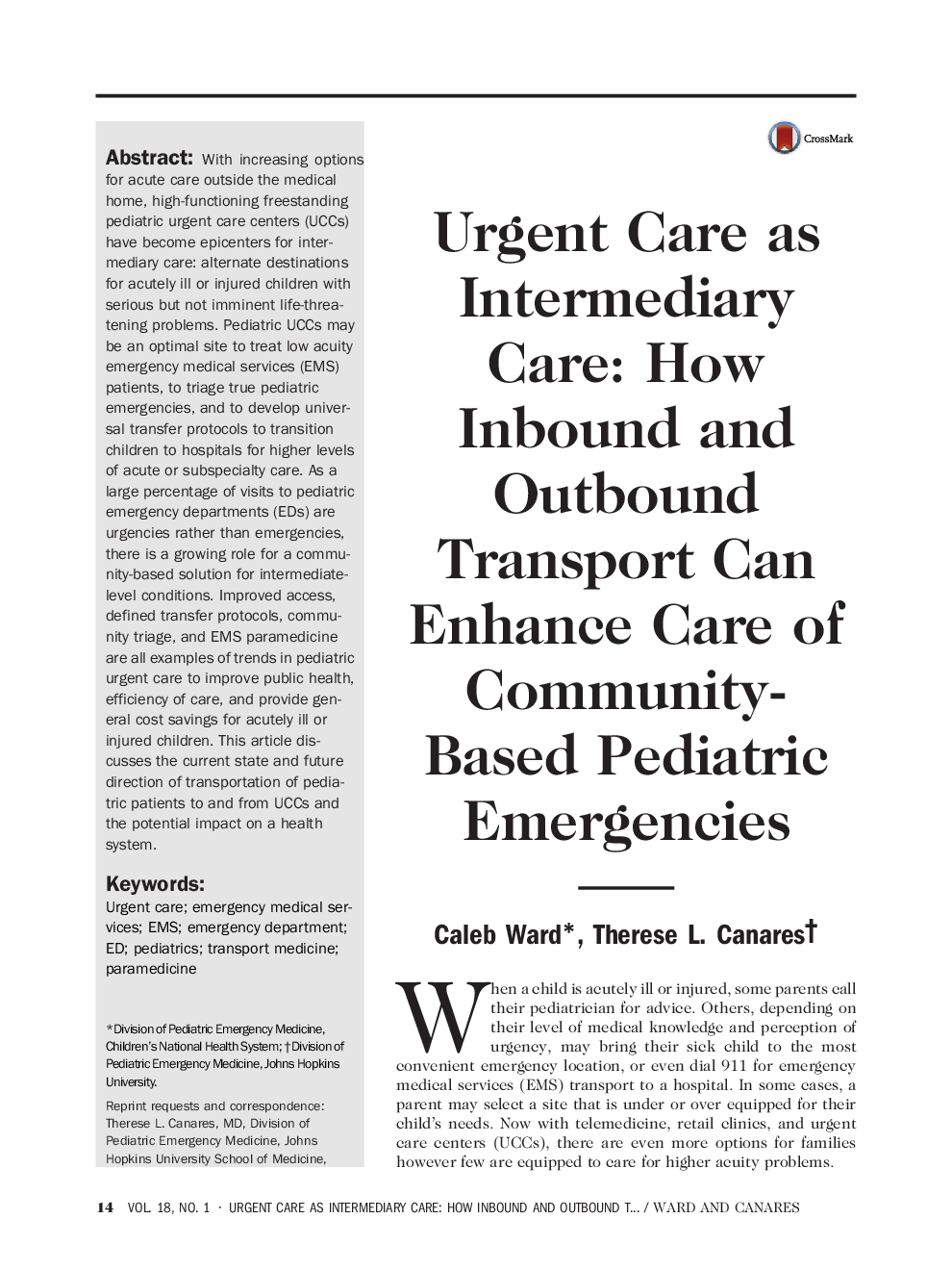| Article ID | Journal | Published Year | Pages | File Type |
|---|---|---|---|---|
| 5652130 | Clinical Pediatric Emergency Medicine | 2017 | 10 Pages |
Abstract
With increasing options for acute care outside the medical home, high-functioning freestanding pediatric urgent care centers (UCCs) have become epicenters for intermediary care: alternate destinations for acutely ill or injured children with serious but not imminent life-threatening problems. Pediatric UCCs may be an optimal site to treat low acuity emergency medical services (EMS) patients, to triage true pediatric emergencies, and to develop universal transfer protocols to transition children to hospitals for higher levels of acute or subspecialty care. As a large percentage of visits to pediatric emergency departments (EDs) are urgencies rather than emergencies, there is a growing role for a community-based solution for intermediate-level conditions. Improved access, defined transfer protocols, community triage, and EMS paramedicine are all examples of trends in pediatric urgent care to improve public health, efficiency of care, and provide general cost savings for acutely ill or injured children. This article discusses the current state and future direction of transportation of pediatric patients to and from UCCs and the potential impact on a health system.
Keywords
Related Topics
Health Sciences
Medicine and Dentistry
Emergency Medicine
Authors
Caleb Ward, Therese L. Canares,
